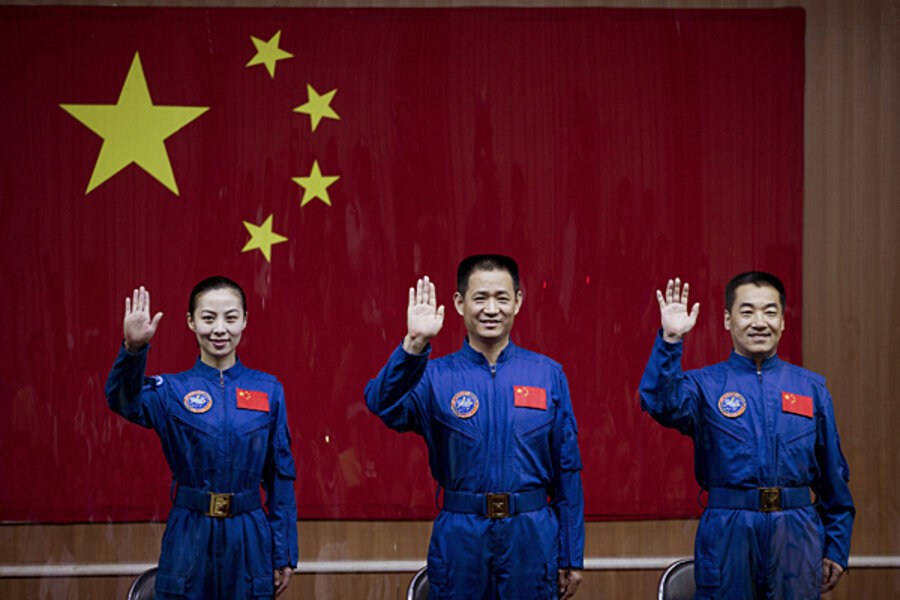With next manned mission, China edges closer to space station
Loading...
If the weather is on their side, a trio Chinese astronauts will lift off on Tuesday, bound for an experimental space station.
Perched atop a Long March 2F rocket, the Shenzhou 10 spacecraft – whose name means "sacred vessel" – is set to transport the three astronauts from the Jiuquan Satellite Launch Center in the Gobi desert to the Tiangong 1, a prototype for a much larger space station scheduled to be launched in 2020.
During their 12-days aboard the Tiangong, which means "heavenly palace," the crew will test the module's systems, conduct medical and technical experiments, and, in an unprecedented exercise in public outreach for China's space agency, deliver a weightless lecture to a group of elementary and middle-school students via a live video feed.
If all systems are go on Tuesday, the launch will mark China's fifth manned space mission. The country launched its first crewed spaceflight in October 2003. So far, eight Chinese astronauts have flown into space.
The Shenzhou 10 crew includes the country's second female astronaut. Wang Yaping is a former PLA Air Force pilot whose past missions include, according to China's People's Daily, seeding clouds in an attempt to prevent rain at the Beijing Olympics in 2008.
China's space program still lags behind those of the United States and Russia, the only two other crewed spacefaring nations. For instance, the first space station, Salyut 1, was launched by the Soviet Union in 1971, and it was twice the mass of Tiangong 1. But China has been advancing rapidly.
"They don't have to reinvent the basic technologies for spaceflight," Australian space analyst Morris Jones told the Associated Press.
A year ago, China successfully performed orbital rendezvous and docking maneuvers with Tiangong 1, a major step toward developing a full-fledged space station.
Shenzhou 10 represents the final mission to Tiangong 1, which is set to be deorbited later this year and replaced in the coming years with the larger Tiangong 2 and Tiangogn 3 modules, which will form the basis for a full-size orbital station.
China is also setting its sights beyond Earth's low orbit. The country is working to deliver a robotic rover to the moon, and, sometime after 2020, a manned moon mission.








